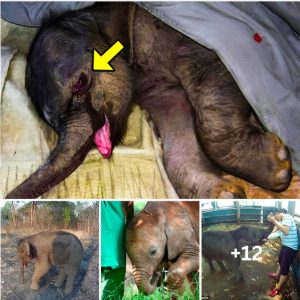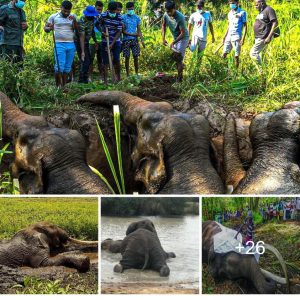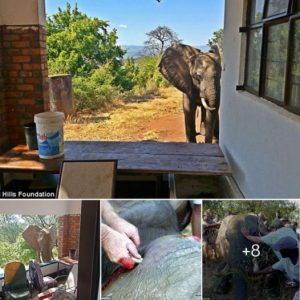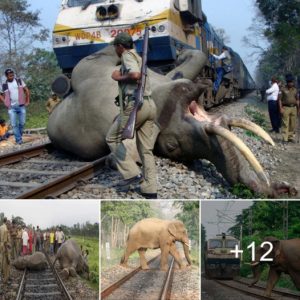The following article has been written by GRI’s Conservation Behaviour Advisor, Lisa Olivier. This article may contain some upsetting content.
Distressing images of faceless grey bodies, blood draining from brutally hacked pieces of flesh. These photos are routine in the media, we have seen them many times. We know how the demand for ivory is affecting this endangered species, wiping out as many as 15,000 every year. But what do we know about the ones left behind? Many are tuskless. Poachers aren’t interested in elephants that don’t bear the lucrative ivory. You might even call them the lucky ones, but are they really so fortunate?

Kasewe, one of the elephants at the Kafue Release Facility is a tuskless cow.
Humans are driving the evolution of elephants, literally changing their faces. In Gorongosa National Park, Mozambique, there were 2500 elephants roaming 50 years ago but by the early 2000s only 200 remained. Thanks to conservation efforts the numbers are on the rise and today there are 800 elephants in the park. However, there has been an unusual trend in this recovery. Many of the females are lacking tusks, 51% of them and 33% of those born after the period of population recovery have been born tuskless. When compared to the 2-4% that naturally occurs in elephant populations, the acceleration of such a rare genetic trait reveals something notable is going on. With the tuskless genes stronger in the reduced population the chances of it being passed on were higher. Humans have created an unnatural selection.
On the surface not having tusks was life saving for the elephants during these tough times, but at what long term cost? Tusklessness could be seen as a biological advantage, it prevented them from being killed. But they are vital to survival, they are used for many activities, digging for water, stripping food from trees, lifting objects and even self-defence. It affects their behaviour as they are often more aggressive. Life without tusks is harder. Research has revealed that the diets of tuskless elephants are significantly different which has an impact on local plant life and the environment. Elephants are known as keystone species, they sculpt and maintain the environment. So tusklessness can have a knock-on effect, whole ecosystems could be changed if the trend continues.
But the biggest issue? Tusklessness is fatal to males.
Tuskless males die in the womb. This will have an impact on population growth. Fewer elephants will be born overall, which could interrupt the species recovery in areas already heavily affected by poaching.
We are seeing similar trends in Zambia, across our National Parks. We even have a tuskless elephant in our care at Game Rangers International. Kasewe’s mother was a victim of Human Elephant Conflict, where humans and elephants compete for the same resources. Even tusklessness won’t save you from all humans.

Our newest rescue, Daliso, with his mother who was also a tuskless cow. She suffered a fatal gunshot wound to her leg, likely caused by human, wildlife conflict.
In the short term it may have saved lives as it made them less appealing to poachers, but we shouldn’t think of it as a positive thing. Tusklessness is a sign of an alarming development signalling an additional decline in the population. Humans are becoming an increasingly strong driver in evolution. We cannot underestimate how our actions are having a lasting impact on wildlife.
We must have a renewed injection of support for anti-poaching efforts, targeting areas that are vital for population recovery. GRI operates in the Kafue National Park, the largest and oldest park in Zambia. The total land cover is 66,000 km2 when including Game Management Areas, which are buffer zones between the park boundary and the community lands. Recently old migratory routes between this and other National Parks, even other countries (Namibia, Botswana and Angola) have been proven through satellite collars placed on wild elephants. Further supporting that this is a key population to protect. GRI’s Resource Protection Programme empowers government and community Rangers to better secure these areas, from poaching and Human Elephant Conflict. They support operations with essential equipment and supplies, deliver training to ensure that Rangers have the skills to operate effectively and safely, and provide crucial welfare support for them and their families.
Help in these efforts by donating online here. This will help not only to save elephants from being brutally torn from life by poachers, but for the survivors, the future of the populations and even the very face of elephants.




